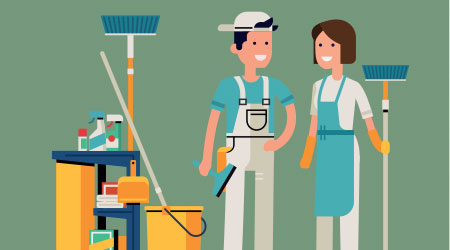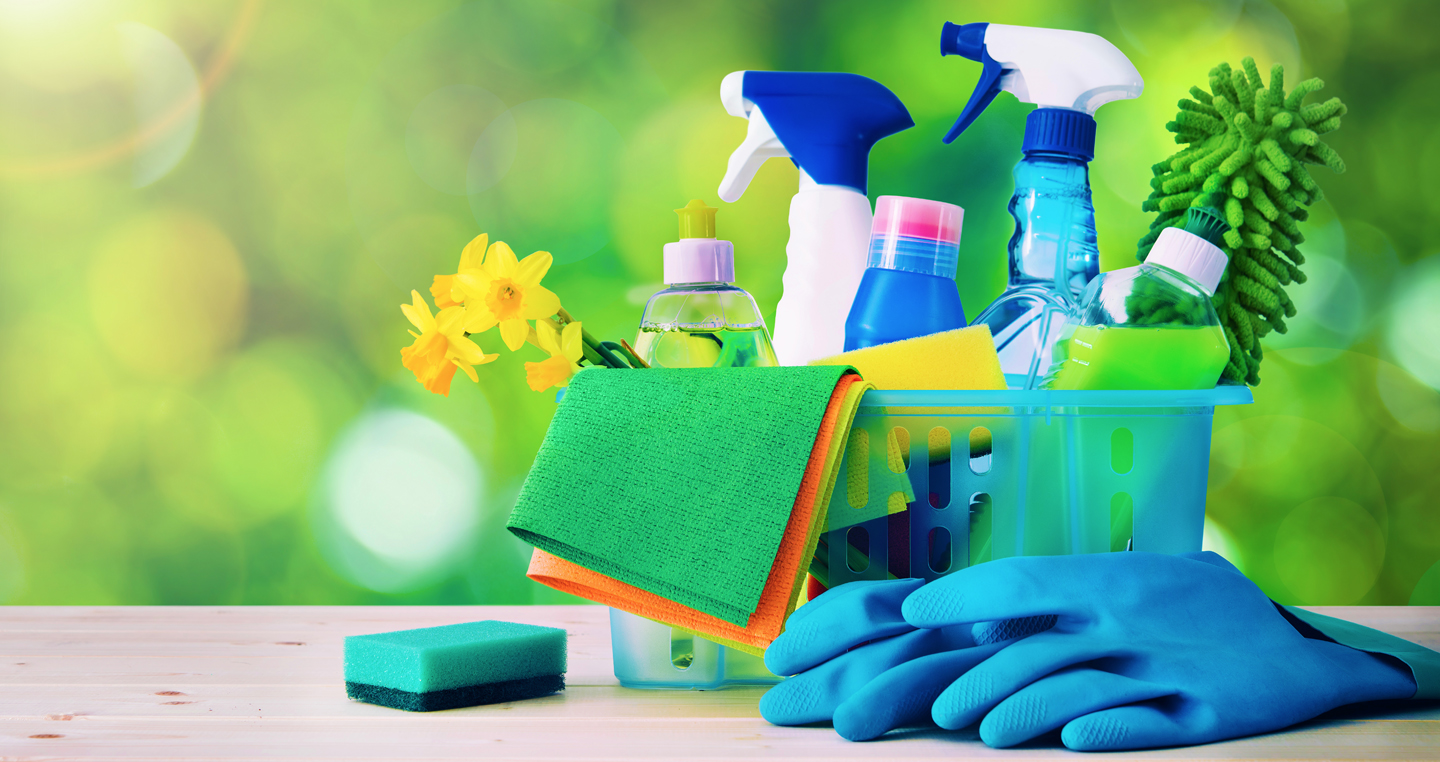Comprehensive Everyday Cleaning Tips: From Defrosted and Cleaned Every Few Months to Removing Clutter
Comprehensive Everyday Cleaning Tips: From Defrosted and Cleaned Every Few Months to Removing Clutter
Blog Article
Understanding the Requirement for Extensively Disinfecting and Disinfecting Frequently Touched Surfaces in High-Traffic Locations
In the world of public health and wellness and security, the careful disinfection and sanitization of regularly touched surface areas in high-traffic areas stand as paramount procedures in stopping the spread of dangerous virus. By checking out the numerous aspects of surface sanitation, from the threats connected with ignoring cleansing procedures to the effective approaches that can be utilized, a more clear understanding emerges of the important duty these methods play in protecting public health.
Relevance of Surface Disinfection
Stressing the extensive disinfection of high-traffic surfaces is vital in maintaining a hygienic environment and protecting against the spread of hazardous microorganisms. High-touch surface areas such as door manages, light switches, elevator switches, and countertops function as breeding premises for germs and viruses. Routine sanitation of these surface areas is critical to decrease the threat of contamination and transmission of diseases.
By applying a durable sanitation procedure, institutions and services can produce a safer atmosphere for staff members, visitors, and clients. Correct surface disinfection not only minimizes the spread of contagious conditions yet also instills confidence in the tidiness and security of the facilities. This positive strategy shows a commitment to health and wellness, which is especially essential in high-traffic locations where the probability of direct exposure to pathogens is increased.
In addition, surface disinfection plays an essential role in overall infection control techniques. Combined with hand hygiene practices, wearing masks, and maintaining physical distancing, extensive sanitation of high-touch surface areas creates a thorough protection versus the transmission of damaging bacteria. Focusing on surface area disinfection is a vital element of an alternative strategy to health and wellness in shared spaces.
Threats of Overlooking Cleaning Practices
Neglecting thorough sanitation of high-traffic surface areas substantially enhances the danger of viral and microbial contamination, presenting a major risk to the health and wellness and security of individuals often visiting these spaces. Failure to execute proper cleansing methods can lead to the buildup and spread of hazardous pathogens, consisting of viruses and germs, on frequently touched surfaces such as doorknobs, hand rails, elevator switches, and kitchen counters.

Moreover, disregarding the relevance of thorough cleansing not only endangers the well-being of people but likewise undermines initiatives to maintain a hygienic and clean setting. It is essential to identify the importance of correct disinfection methods in stopping the spread of infections and safeguarding public health and wellness.
Reliable Disinfection Techniques
To maintain optimum cleanliness and decrease the threat of contamination on high-traffic surfaces, employing efficient disinfection approaches is important. Among one of the most effective and usual disinfection methods is utilizing chemical anti-bacterials. These items can vary in strength and composition, with some targeting certain pathogens like germs or viruses. It is essential to comply with the maker's directions for correct dilution, contact time, and ventilation when utilizing chemical disinfectants to ensure their efficiency - Everyday cleaning.
One more efficient technique is making use of UV-C light. UV-C light has been shown to be efficient in killing a broad range of microorganisms by disrupting their DNA framework, thus preventing them from replicating. It is important to use UV-C light properly, making certain that the proper intensity and exposure time are applied to achieve the wanted disinfection outcomes.
Additionally, using steam cleaning as a sanitation approach can be very reliable, specifically on surfaces that are heat-resistant. Heavy steam can penetrate permeable surfaces and eliminate microorganisms, viruses, and various other pathogens successfully. When using steam cleansing, it is essential to ensure that the surface gets to the required temperature for an enough quantity of time to guarantee correct disinfection.
Effect On Public Wellness
The maintenance of high criteria of tidiness and sanitation on high-traffic surface areas plays an essential duty in safeguarding public health and wellness. Often touched surface areas in locations with high footfall, such as doorknobs, handrails, lift switches, and restroom centers, serve as reproducing premises for hazardous microorganisms. Falling short to effectively decontaminate these surfaces can bring about the quick spread of infectious illness within communities. By applying extensive sanitation protocols, the danger of transmission of infections, bacteria, and other bacteria can be dramatically decreased.
Efficient cleanliness methods not only protect people from falling sick however likewise add to the general health of culture. Public health and wellness authorities highlight the significance of preserving clean settings to stop break outs and include the spread of diseases. In high-traffic locations like airport terminals, colleges, healthcare facilities, and public transportation systems, the impact of extensive disinfection measures can not be understated. Prioritizing the sanitization of regularly touched surface areas is a proactive technique to promoting public wellness and improving the safety of people in shared areas.
Executing Normal Cleaning Methods
Quickly setting up and adhering to a regular routine of cleansing protocols is vital for maintaining the tidiness and security of high-traffic surfaces. Routine cleansing protocols are necessary in avoiding the accumulation of germs and virus on frequently touched surfaces, particularly in locations with high foot traffic. By implementing a systematic method to cleansing, companies can effectively decrease the danger of disease transmission and produce a much healthier setting for employees, clients, and the public.
To establish an effective cleaning routine, it is crucial to identify high-traffic areas that need frequent interest. These areas might consist of doorknobs, hand rails, lift buttons, toilet centers, and common equipment. Implementing a routine cleaning regimen that targets these surfaces numerous times a day can significantly lower the spread of unsafe germs and infections.
In addition, utilizing appropriate cleaner and disinfectants is essential to making sure that surface areas are completely disinfected. Normal training of cleansing team on appropriate cleaning methods and Clear Out Any Clutter the value of adherence to the cleansing routine is likewise important in maintaining a hygienic setting. By focusing on regular cleansing procedures, organizations can advertise the wellness and wellness of people who communicate with these high-traffic surfaces.

Conclusion
In verdict, it is vital to prioritize detailed sanitation and sanitization of often touched surfaces in high-traffic locations to avoid the spread of hazardous virus and keep public health. It is critical to recognize the significance of keeping tidy surface areas in high-traffic locations to guarantee the health of the community.
In the world of public wellness and security, the careful sanitation and sanitization of frequently touched surfaces in high-traffic locations stand as vital measures in protecting against the spread of dangerous pathogens. By discovering the numerous aspects of surface area disinfection, from the threats associated with ignoring cleaning methods to the efficient methods that can be utilized, a more clear understanding emerges of the crucial duty these practices play in safeguarding public wellness.Additionally, utilizing vapor cleansing as a disinfection technique can be very effective, particularly on surface areas that are heat-resistant. When making use of steam cleaning, it is crucial to guarantee that the surface area gets to the required temperature for an adequate quantity of time to assure proper sanitation.
In conclusion, it is important to focus on comprehensive disinfection and sanitization of often touched surface areas in high-traffic locations to avoid the spread of damaging virus and keep public wellness.
Report this page